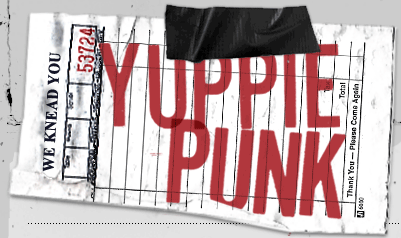‘No Room for Rockstars’ vs. ‘One Nine Nine Four’

A pair of documentaries, both now available online, explore the explosion of punk rock in the ’90s, though each takes a dramatically different approach. Whereas “” is heavy with interviews from some of punk rock’s biggest stars, “No Room for Rockstars” follows a group of mostly up and coming acts on 2010’s Warped Tour. The other major way in which the two films are different is that one of them is really good and the other one pretty lousy. They both, however, have Fletcher from Pennywise, so at least there’s that.
“No Room for Rockstars,” which was directed by Parris Patton, follows a group of acts on the Warped Tour, the long-running summer concert tour that helped put bands like No Doubt, Blink-182 and Fallout Boy on the map. However Patton isn’t interested in rockstars — as if the title alone wasn’t enough to give that away. He’s more interested in the experience of being on the tour, and especially from the perspective of the hard-working bands that haven’t yet broken through. Patton even follows a band from “nowhere” California called , who aren’t part of the tour, but who drive from show to show in their crappy van selling CDs outside the venues to anyone who will listen. The film also follows Never Shout Never, Mike Posner and the extreme metal of Suicide Silence. What the film offers, isn’t just a revealing look at the culture and goings-on behind-the-scenes at Warped, but an insightful look at the plight of working class bands. For all the fun that playing in front of thousands of kids can be, it isn’t an easy road, particularly if you’re trying to provide stability to a young family, as Mitch Lucker from Suicide Silence is. As well, the film never feels like a marketing vehicle for the tour. Though Patton has great access, we see both the humanity and the rampant consumerism. We also see both sides of Kevin Lyman, the tour’s founder. In one scene, he cooks lunch for the tour’s dozens of bus drivers, just one of many unsung populations that keep Warped running. And later, during a stressful battle with crummy weather, Lyman berates a tour manager who made the mistake of asking the wrong question at the wrong time. Perhaps part of the reason the film is able to keep its perspective on Warped is the fact that Patton wasn’t overly familiar with the tour before making the film, though the struggle of a young band can’t be entirely unlike the struggle of a young filmmaker. The film is available for rent or purchase via .
“One Nine Nine Four,” which, as its poster touts, documents the birth, growth and explosion of punk rock in the 90s, is narrated by Tony Hawk and features a who’s who of modern punk stars, including members of Green Day, Blink-182, The Offspring and Bad Religion. But despite the pedigree of the folks interviewed, there’s little to grab onto beyond the Q&As. As a film, director Jai Al-Attas, comes up way short. Not only is there almost no footage outside of his interviews to tie things together, even the interview segments aren’t particularly well photographed. For a PBS documentary, the all-talking heads approach can work, but for a subject as colorful as punk rock, Al-Attas really misses the mark by not including more outside content. Either the interview subjects didn’t give him adequate access, or he didn’t ask for it, but either way it would have nice to have experienced more from the many musicians featured than simply them sitting in a non-nondescript office or studio. There are a few videos and a few photos here and there, but it just didn’t seem the film was well-funded enough or well-produced enough to really due its topic justice. Even the narration is overly simplified and fans of the genre aren’t likely to learn anything they didn’t already know. It touches on important punk institutions like 924 Gilman and Lookout! Records, but not with any new insights or eye-opening revelations. In addition, beyond the band members, there are only a handful of other people included as interview subjects — and nobody who can put the movement into any kind of larger context. There are no sociologists included, no music historians. The film mostly feels like an excuse for Al-Attas to interview his favorite bands, and as such, comes off as little more than a nice compilation of interviews with notable ’90s punk acts. But as a piece of art, and as a film that seemed to have more lofty ambitions, it falls way short, which is too bad, since it’s a worthy topic and one that will likely be explored more thoroughly in the future. You can see the film on .
Strangely, both directors were on “Last Call with Carson Daly.” Here’s Parris Patton’s segment:
And here’s Jai Al-Attas, sort of:






